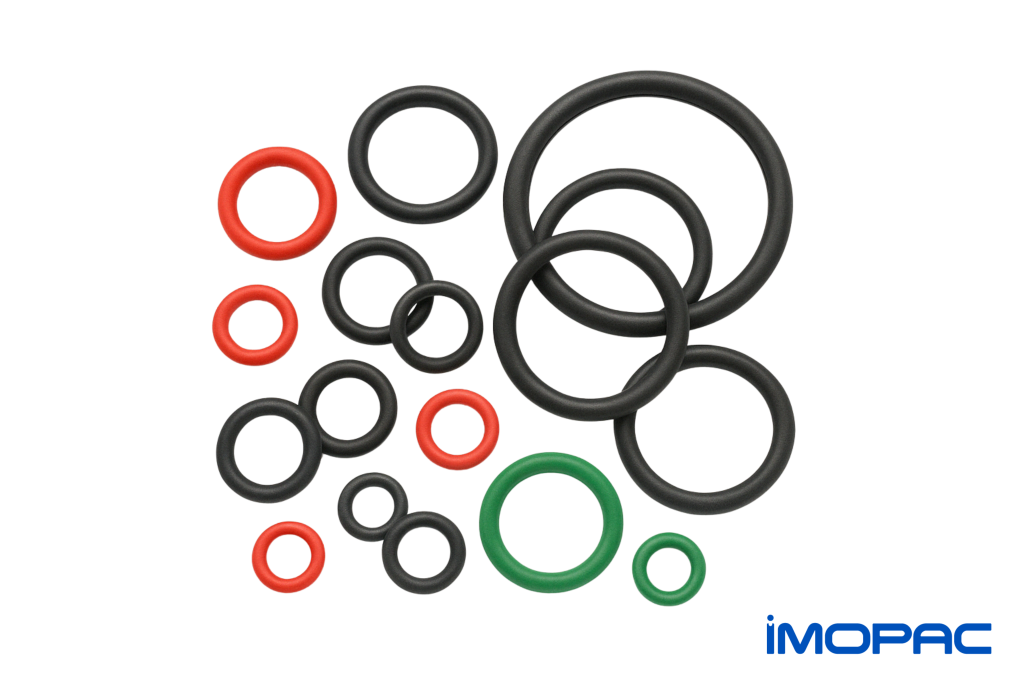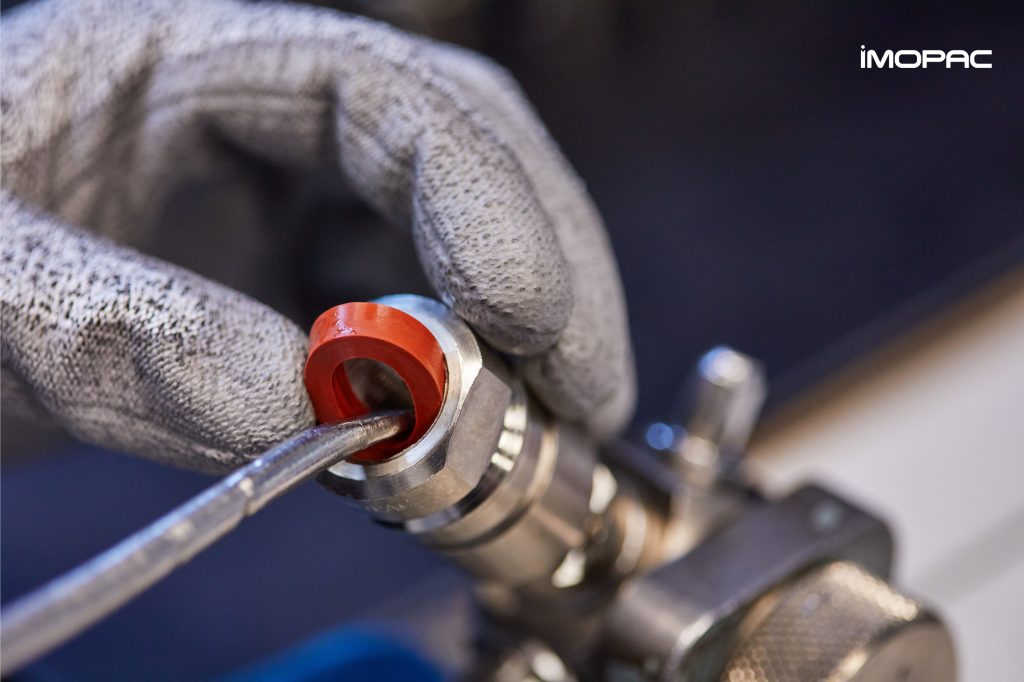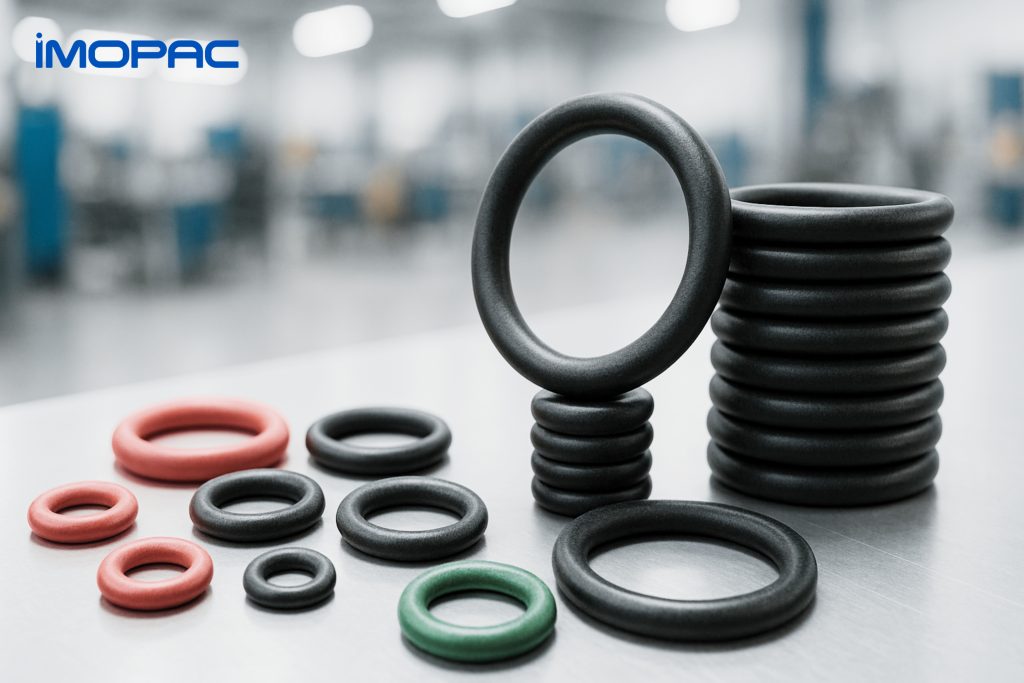In any quick coupling or sealing system, O-rings are not a minor detail: they are the element that ensures the fluid does not escape and that the installation remains reliable and safe.
Choosing the right O-ring depends not only on the fluid being used. Factors such as temperature, pressure, and operating environment directly influence performance and service life.
In this guide, we review the most common types of O-rings used in industry and their main applications.

What is an O-Ring and Why is it Important
An O-ring is an elastomer ring placed in a groove and compressed during assembly, creating a tight seal between two surfaces.
Its function is simple but critical: preventing gas or liquid leaks even under demanding conditions.
In sectors such as pneumatics, hydraulics, chemical, or pharmaceutical, choosing the wrong O-ring can lead to loss of efficiency, downtime, and additional maintenance costs.
Key Factors for Choosing an O-Ring
- Fluid compatibility: oils, water, steam, solvents, hydrocarbons.
- Operating temperature: low, medium, or high thermal demands.
- System pressure: a standard pneumatic installation is not the same as a high-pressure circuit.
- Environment: presence of chemicals, frequent cleaning, outdoor exposure.
- Standards and certifications: in industries such as food or pharma, it is essential to use FDA or equivalent compliant O-rings.

Common Mistakes When Selecting O-Rings
| Failure Mode | Cause | Symptom | Prevention |
|---|---|---|---|
| Compression set (permanent deformation) | High temperature, over-compression | O-ring does not recover shape, leaks after stops | Select proper material, correct groove design |
| Extrusion / nibbling | High pressure, excessive clearances | Bitten edges, material loss | Use backup rings, reduce clearances |
| Abrasion / wear | Movement, fluid particles, rough surfaces | Grooved surface, section loss | Proper lubrication, filtration, smooth finishes |
| Chemical swelling | Incompatible fluid | Color change, volume increase, loss of properties | Select material based on real chemical compatibility |
| Heat / ozone cracking | Aging, thermal cycles, environmental exposure | Visible cracks, stiffness | Use resistant compounds, proper storage |
Pro Tip: Extend the Service Life of Your O-Rings
In quick coupling systems, O-ring life can be significantly extended by using hardened couplings. If a coupling is not hardened, repeated impacts during operation can deform the edges, damaging the O-rings when inserted. Choosing a manufacturer that hardens couplings protects the seal and extends your investment.

Most Common O-Ring Materials
Material choice is the starting point. Not all O-rings perform equally under heat, pressure, or chemical exposure.
NBR (Nitrile)
✔ Compatible with compressed air and mineral oils.
✔ Good performance in standard applications.
❌ Limitations: low resistance to high temperatures and aggressive chemicals.
📌 Applications: pneumatics, automotive, general industrial machinery.
FKM (Viton®) – FDA option available
✔ Excellent chemical resistance to hydrocarbons, solvents, and aggressive fluids.
✔ Good thermal resistance (up to 200–250 °C).
❌ Limitations: reduced performance in continuous water or steam exposure.
📌 Applications: chemical industry, oil & gas, demanding environments. With FDA compliance, also suitable for pharmaceutical and food applications.
EPDM – FDA option available
✔ Excellent performance in hot water and steam.
✔ Compatible with non-petroleum fluids.
❌ Limitations: incompatible with mineral oils and greases.
📌 Applications: heating systems, sanitary, food, and pharmaceutical industries.
VMQ (Silicone) – FDA option available
✔ Wide temperature range (−60 to +200 °C).
✔ Suitable for hygienic applications.
❌ Limitations: limited chemical resistance, not suitable for oils or solvents.
📌 Applications: food, medical, pharmaceutical industries.
FFKM (Perfluoroelastomer)
✔ Exceptional chemical and thermal resistance (up to 320 °C).
✔ Maximum durability in extreme environments.
❌ Limitations: very high cost.
📌 Applications: fine chemicals, energy, critical pharmaceutical processes.
Best Practices and Conclusions
When installing O-rings, it is essential to follow the tolerances defined by ISO 3601, as they ensure the correct compression and reliable sealing. The groove should be free of sharp edges that could damage the O-ring during assembly, and a compatible lubricant should be applied to prevent twisting or pinching. It is also important to consider whether the application involves static sealing (no movement) or dynamic sealing (relative movement), as requirements and performance will differ in each case.
In short, O-rings are a critical component in any sealing system. Choosing the right one ensures greater reliability, durability, and operational efficiency.
At IMOPAC, we offer a wide range of compounds (NBR, FKM, EPDM, VMQ, FFKM, and others) and have a Technical Department ready to advise you on the best choice.
👉 Do you have doubts about which O-ring is the best fit for your application? Contact us and we will help you make the right choice. Check out our LinkedIn to stay up to date with news, updates, and user guides.